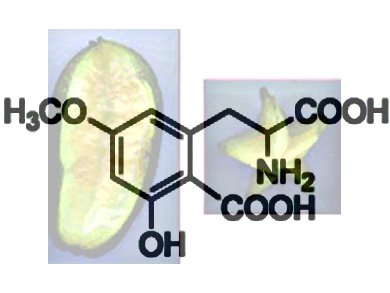Neurotoxin from Star Fruit
Patients with kidney disease have to watch what they eat: bananas, oranges, tomatoes, nuts, broccoli, and beans are all off-limits. Putting star fruit or carambola on the menu would be downright dangerous. This fruit contains a substance that is a deadly neurotoxin for people with kidney disease. Brazilian researchers have now isolated and identified this neurotoxin. As they report in the journal Angewandte Chemie, it is an amino acid similar to phenylalanine.
Star Fruit Dangerous for Patients With Kidney Disease
People suffering from chronic kidney disease have to avoid eating star fruit if they value their lives. Around the world, many cases have been documented in which ingestion of the yellow star-shaped fruit led to poisoning of dialysis patients and people with kidney disease. There are a variety of symptoms: from intractable hiccups, vomiting, weakness, mental confusion, and psychomotor agitation, to unusually long-lasting epileptic seizures, coma, and death. In acute cases, only hemodialysis can save the patient.
It is clear that star fruit contains an unidentified neurotoxin that healthy people clear out through the kidneys without problems. In those with kidney disease, however, the toxin accumulates and can eventually enter the brain. A team at the University of São Paulo, Brazil, has now been able to unmask the culprit.
Star Fruit Neurotoxin Identified
To do this, scientists led by Norberto Garcia-Cairasco and Norberto P. Lopes modeled star fruit poisoning in animals. They gave either crude extracts of star fruit to animals with experimental kidney disease to mimic the patient´s ingestion or injected extracts of star fruit into the brains of healthy rats, inducing the behavioral and electrographical seizures typical of star fruit poisoning. The extracts were fractionated by means of chromatographic procedures and each individual fraction tested for activity. Active fractions were then chromatographically separated and tested again. This process was repeated until a single substance responsible for the seizures was isolated. The researchers named it caramboxin.
By using a variety of spectroscopic techniques, the scientists were able to determine the structure of caramboxin. The main structure of the neurotoxin resembles that of the amino acid phenylalanine. In contrast to the natural amino acid, the phenol ring of the toxin is also bound to extra ether, alcohol, and acid groups.
Further tests revealed that caramboxin acts on AMPA and kainate receptors, two important glutamate-controlled neurotransmitter receptors of the central nervous system. This causes hyperexcitability in the brain, resulting in the typically observed seizures, which showed neurodegenerative effects in the study.
- Elucidating the Neurotoxicity of the Star Fruit,
Norberto Garcia-Cairasco, Miguel Moyses-Neto, Flavio Del Vecchio, José A. C. Oliveira, Francisco L. dos Santos, Olagide W. Castro, Gabriel M. Arisi, Márcio Dantas, Ruither O. G. Carolino, Joaquim Coutinho-Netto, Andre L. A. Dagostin, Marcelo C. A. Rodrigues, Ricardo M. Leão, Samir A. P. Quintiliano, Luiz F. Silva Jr., Leonardo Gobbo-Neto, Norberto P. Lopes,
Angew. Chem. Int. Ed. 2013.
DOI: 10.1002/anie.201305382


